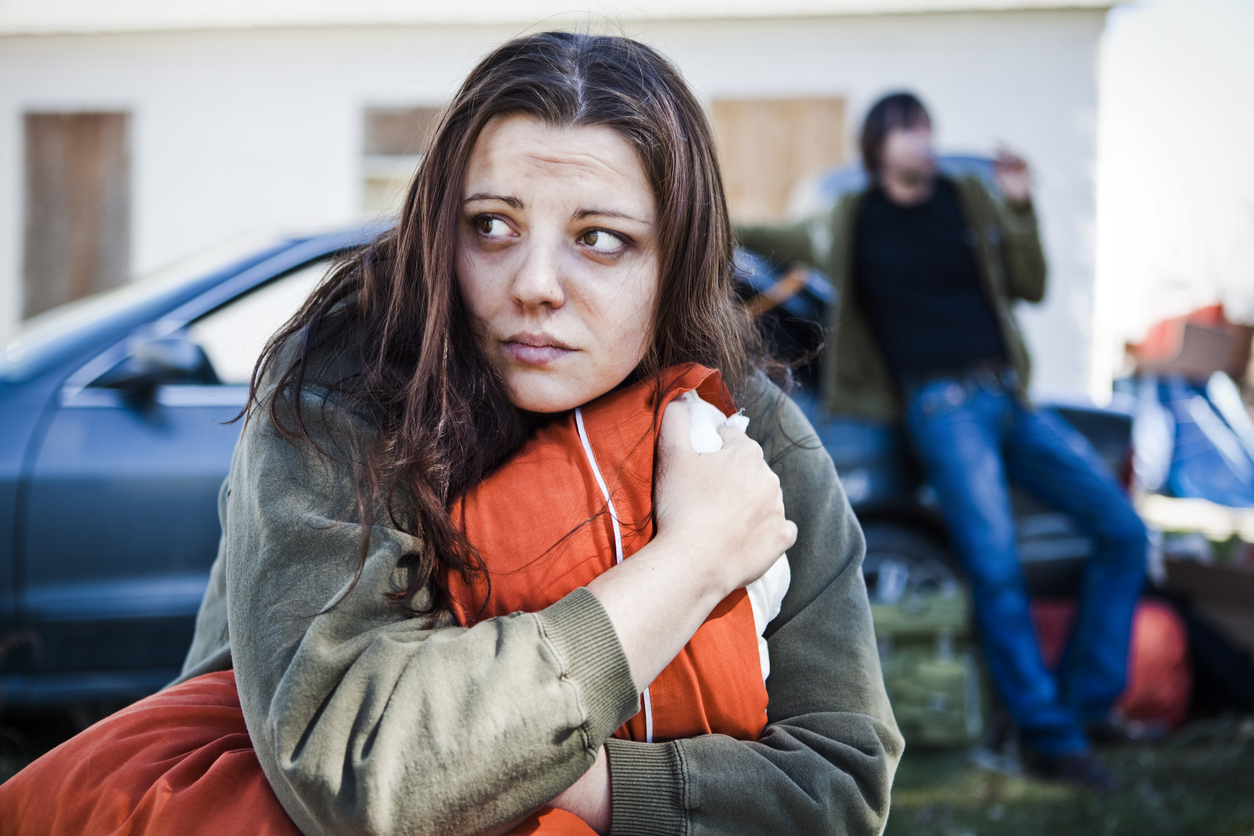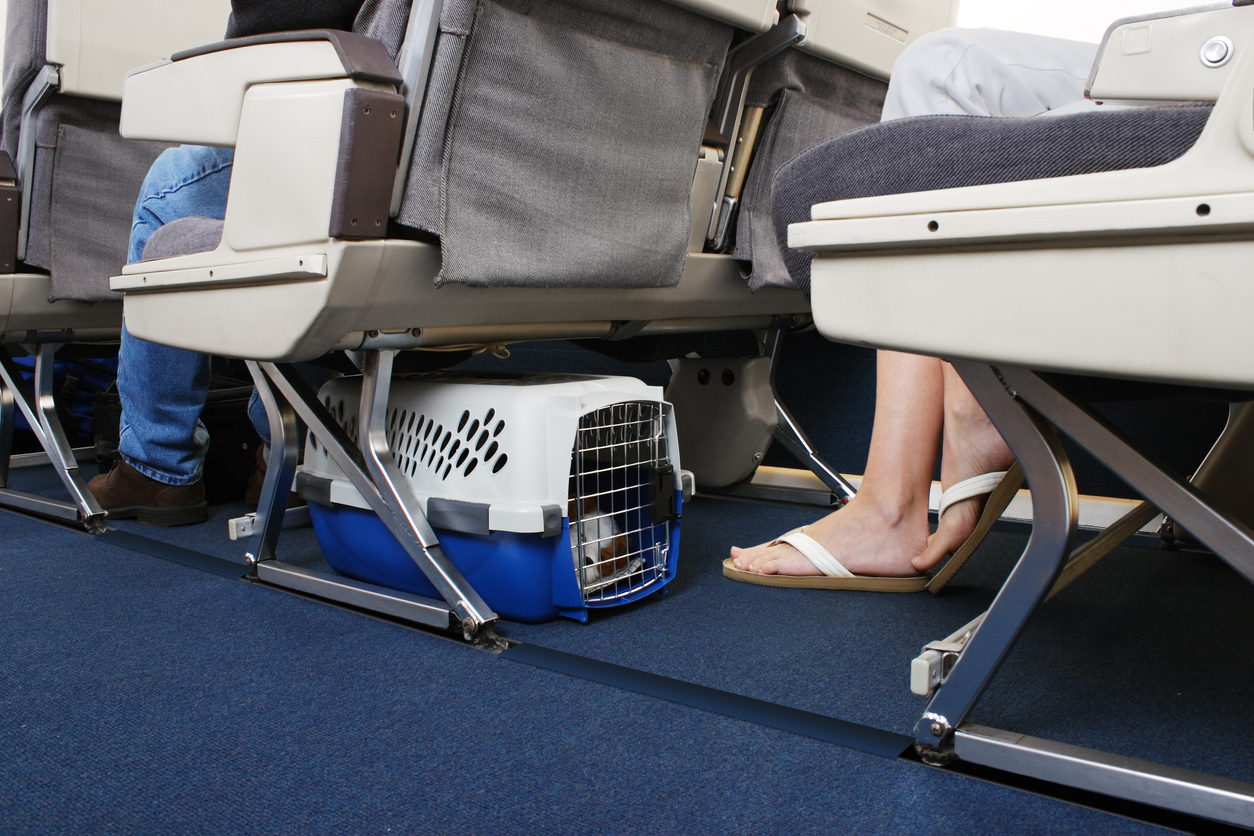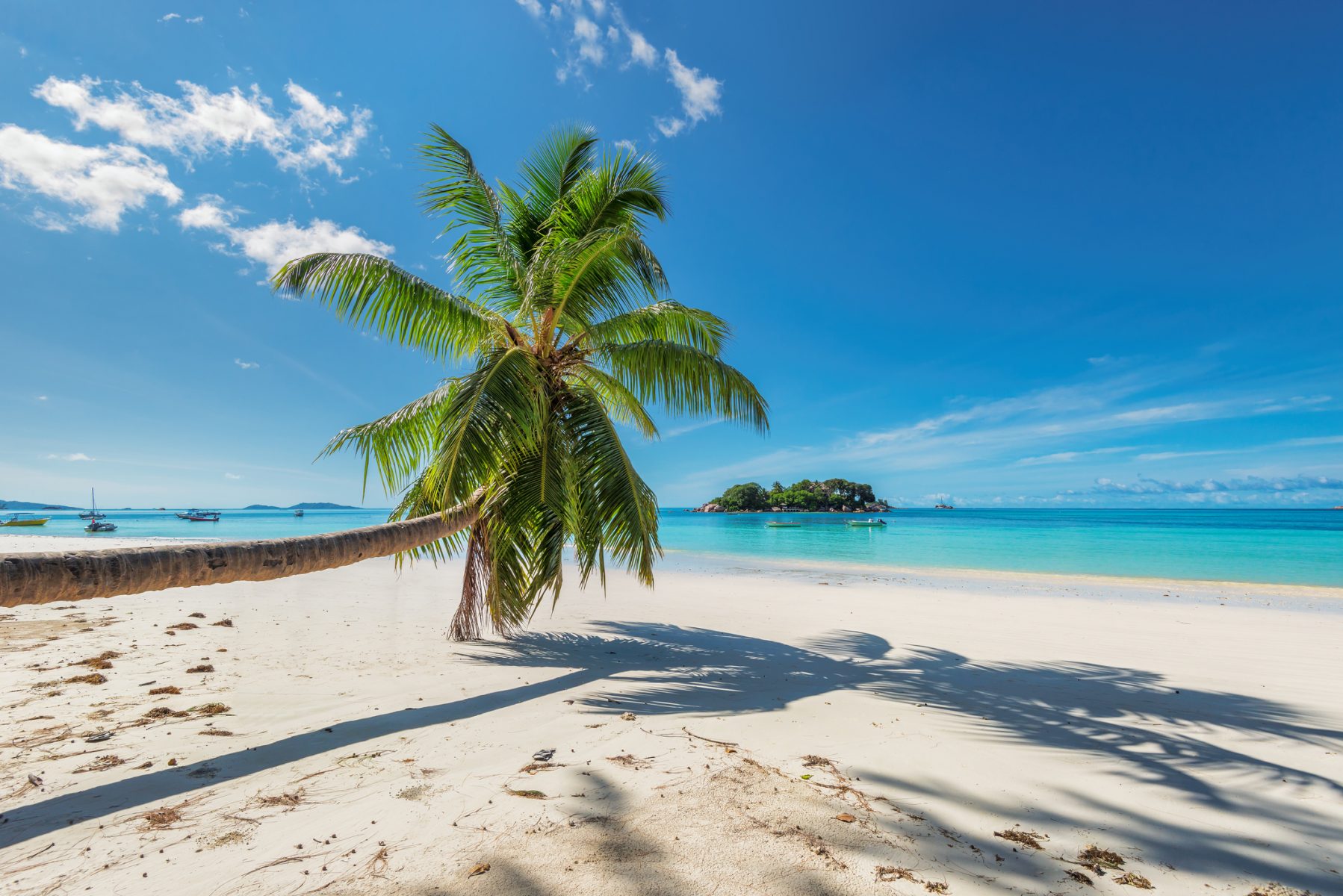The Complete Guide to Last-Minute Evacuations
Signing up for credit cards through partner links earns us a commission. Terms apply to the offers listed on this page. Here’s our full advertising policy: How we make money.
Update: One or more card offers in this post are no longer available. Check our Hot Deals for the latest offers.
There’s no question last-minute evacuations can be scary and stressful, especially if you don’t have the information you need during communication blackouts or loss of power. Adding last-minute travel to the mix might feel insurmountable.
While disasters are rare, it’s best to plan early and be among the first to leave when you think a bad situation might be on the way, if you have any advance notice.
Your options include flights, rental cars, and simply loading up your vehicle and driving to a safer place.
Regardless of how you evacuate, collecting miles and points with the best travel credit cards can save big bucks at this critical time. And having a hotel credit card can help you get free lodging when you need somewhere to go.
You’ll also want to consider what to pack, how to bring your pet along, and collecting important documents. We’ve created a guide to help you plan so you can feel prepared and safe, and save money in the process.

Don’t wait for a severe event to happen. It’s never too early to think about your personal safety!
Guide to Last-Minute Evacuations Table of Contents:
- Last-Minute Travel by Air
- Last-Minute Travel with a Rental
- Finding a Last-Minute Hotel
- Last-Minute Evacuation for Your Pets
- Packing for an Evacuation
- One Final (and Frugal) Checklist
- Following Up Financially
Last-Minute Travel by Air
Use Your Miles & Points to Save Money
Collecting points and miles with travel rewards credit cards can not only get you free or cheap award travel, but can come to the rescue before a disaster. That’s because airlines will often open more award seats in the days leading up to a flight. So if you have miles or points saved, you can use them to evacuate.
That’s why it’s a good idea to have a stash of miles or points handy.
And if disaster strikes unexpectedly, you’ll want to book fast, because other folks will likely snag award seats in hopes of saving money, too. Be sure to practice booking an award ticket or hotel room so you don’t have to learn under pressure.

Having a credit card with a transferable points program gives you the flexibility to use your rewards however you want. The 4 main programs are:
Between these 4 rewards programs, you have 40+ airline programs to chose from when you’re ready to transfer your points.
Learn the Quirks Now So You Won’t Be Surprised in an Emergency
Keep in mind, purchasing certain award tickets within days or even a couple of weeks before departure can mean extra fees if you book with certain programs. For example, if you book an award ticket with American Airlines or United Airlines, they both tack on a $75 fee per award ticket booked within 21 days of departure. But if flights otherwise cost $100s, you might consider paying it to save on an expensive cash ticket.
Delta, on the other hand, does not charge close-in booking fees, just the usual taxes and fees – even on the day of departure. This is why having a credit card with a transferable points program is helpful.

An extremely important thing to remember is points transfers to airlines are not always instant. It can take days (or even weeks) for points to transfer, depending on the airline.
For example, it can take up to 24 hours for your American Express Membership Rewards points to transfer to AeroMexico miles. Most Chase Ultimate Rewards transfers to airlines are instant, while Marriott can take up to ~48 hours to receive your transferred points.
Get familiar with the program you prefer, and make note of which airline miles post instantly after you make a transfer. You can always transfer the minimum amount to make sure they post immediately before you transfer all your points, if you’re in a potential emergency situation. Just note that once you make the transfer, it’s final.
You can also book paid flights through bank travel portals, like the Chase Ultimate Rewards portal or Citi ThankYou website. That’s another helpful way to use your points for flights – and save money – to get you to safety.
Book Early and Show Up for Your Flight
If you have to pay cash, book as early as possible! Remember, you can cancel most paid flights within 24 hours without penalty. So snag a seat right away – you can always cancel the same day if you find a cheaper seat. You just want to make sure you have something booked in case you have to use it. And prices could rise as demand increases.
I recommend looking at all your options with Google Flights. If you like to fly Southwest, remember you always have to search directly on their website.
With certain cards, you can book cash flights and use rewards to offset your purchase after the fact. These cards let you book airline tickets now, then use points for statement credits later:
- Capital One Venture Credit Card- Our review of the Capital One Venture
- Barclaycard Arrival Plus® World Elite Mastercard® – Our review of the Barclaycard Arrival Plus
- U.S. Bank Altitude™ Reserve Visa Infinite® Card – Our review of the US Bank Altitude Reserve

Having a ticket already bought gives you a better chance of flying standby on an earlier or later flight.
You can fly standby if:
- Your original flight is canceled or delayed for any reason
- You’re already at the airport and there’s an open seat on an earlier flight
- You hold a full-price ticket and want to get on an earlier flight
- You have a friend or family member working at the airline, and even then, you should be prepared to wait. Though, this is next to impossible when flights are sold out
You might have to pay a same-day standby fee, but again, even with a fee considered, you could save $100s versus waiting too long to buy tickets.
Pay for Private Flight Services
Chartering a private flight may be the only way to evacuate if major airlines are sold out or flights are canceled.
If you’re in a group, book together because you are paying for the whole aircraft, not per passenger. It becomes more affordable to book a private flight if you can book with other evacuees.
If you’re out of the country, or nowhere close to home, think about flying to the nearest safe country or destination. The cost of flying home by private jet can be astronomical, so flying to the closest “safe” hub will make it easier for you to make safer and cheaper reservations once you evacuate.
International airports usually close first in the event of an emergency, whereas smaller, regional airports stay open longer. Private jets can use the smaller runways at regional airports more easily than commercial airlines, so try to depart from a smaller airport if you can.
Government Assistance
Airlines may coordinate with the government during a disaster to offer cheap or free transport to those affected. Be sure to call your local emergency number to check if there are any options available to you, especially if you have no other way out.
Booking a last-minute flight can be expensive. Our advice would be to have rewards points and miles saved up for an event like this, because it will save you $100s, if not $1,000s, in an emergency.
Last-Minute Travel with a Car Rental
Book Using Miles and Points
If you’re able to evacuate by car, you can save the most money by using miles and points from a rewards credit card toward your last-minute rental.
Rental car prices fluctuate a lot, and there’s no way to tell which way it’ll swing for a last-minute rental. While it’s always a good practice to book as far in advance as you can, you can’t always do this during an evacuation.

My favorite way to save $100s of dollars on a rental car is by booking through the Chase Ultimate Rewards and Citi ThankYou travel portals. Citi Premier Card cardholders can redeem ThankYou points for 1.25 cents each toward car rentals.
And depending which Chase Ultimate Rewards card you have, you can redeem Chase Ultimate Rewards points for 1 or 1.25 cents per point. The exception is for Chase Sapphire Reserve® cardholders, who can redeem toward travel for 1.5 cents per point.

You can cancel a rental car free of charge up to 6 hours before pick-up with the Chase Ultimate Rewards portal. They have 1-way car rental options, and have some non-airport locations.
And the Capital One Rewards travel portal sometimes has car rentals that are cheaper than Chase Ultimate Rewards and Citi ThankYou portals.
A one-way rental can be helpful in the event of an evacuation, especially if you don’t plan on returning to the disaster area. Or don’t know when you’ll be able to return.
It’s also a great idea to book a rental car using a card that comes with primary rental car insurance, such as the Chase Sapphire Preferred® Card. Just remember, this primary rental car insurance only covers damage due to collision or theft to your vehicle, NOT the liability for damage to other vehicles or property, or for injuries.
Book Last-Minute Rentals Using Hotwire and Costco Travel
Hotwire and Costco Travel are 2 of the best sites to get the best price on a rental car.
However, Hotwire does NOT allow cancellations or flexibility with their bookings, whereas Costco Travel allows free cancellations and tends to have lower prices than Hotwire. But of course, you need a Costco membership to use the Costco Travel website.
Personally, I check Costco Travel and the Chase Ultimate Rewards portal, and then book whichever is cheaper. But most of the time, Costco Travel is the winner.
There are a few easy ways to avoid overpaying for your rental car. If possible, try and book a round-trip rental, because one-way rentals are usually more expensive. That might not be possible when you evacuate because you might not know when you’ll be able to return, especially if there’s damage to roads, bridges, and other infrastructure.

Using AutoSlash is an easy way to track your car rental reservations for a price drop. The site can re-book the reservation automatically or notify you if the rental gets cheaper. But again, if you’re booking same-day, you might have to take what you can get.
Some car rental companies, such as Alamo, have a section on their website or mobile app dedicated to last-minute specials. Enter your pick-up location and travel dates, and you will see the current specials listed. Never hurts to try!
Sign-Up for Frequent Car Rental Programs
Enrolling in car rental frequent rental programs is fast and free. The best benefit of these programs is skipping the line at the rental counter and going straight to your car. You can also earn free rental credits and/or airline miles.
Earn Points on Gas
You might decide the best way to evacuate is to hop into your own car and start driving out of harm’s way.

In that case, make sure to use a rewards credit card that gives you the most points for gas. My personal favorite is the Citi Premier Card, which earns 3X Citi ThankYou points per $1 spent on travel, including gas and car rentals.
Check for Government Organized Transportation
Your local government may organize free transportation in your area. Look into government shuttles, and their corresponding pickup points, to see if those can help.
Finding a Last-Minute Hotel
Finding shelter is critical during an evacuation. Options beyond a hazardous area could mean staying with family or friends, paying for a hotel, or finding a mass shelter.
If you can stay for free with people you know, that would be the best option because you’d be with people who care about your well-being. And if that’s not an option for any reason, here’s what you can do.
Use Points to Book a Free Hotel Room
If you have hotel points, see if you have enough in your loyalty account to cover free award nights. And most hotel chains have their own credit cards that earn points, including:
- Hilton Honors American Express Surpass® Card
- World of Hyatt Credit Card
- IHG® Rewards Premier Credit Card
The information for the Hilton Surpass card has been collected independently by Million Mile Secrets. The card details on this page have not been reviewed or provided by the card issuer.

Remember, Chase Ultimate Rewards points transfer 1:1 and instantly to Hyatt, IHG, and Marriott. Many Hyatt House and Hyatt Place hotels start at just 5,000 or 8,000 Hyatt points per night. You can also use your points to pay for a stay through the Chase travel portal.
And AMEX Membership Rewards transfer 1:1 and instantly to Choice, Hilton, and Marriott. You won’t always get the best value. But if prices are high and award rooms are open, it might be worth it to make the transfer, especially if you just need to top-off your account to book right away.
Here are the best hotel credit cards you can use to help pay for your accommodations if you have to pay a cash rate.
Airbnb Is an Excellent Alternative
Airbnb locations are everywhere, even in non-touristy places. They may be options just outside an evacuation zone so you won’t have to drive far.
The advantage here is you can book a place with several rooms if you’re evacuating with family. So you can save money instead of booking more than 1 hotel room.
Or if you’re evacuating solo, you can sometimes book a private room in someone’s residence for much cheaper than hotel rooms might cost, especially if prices are surging because of demand.

And if you have the Capital One Venture Rewards Credit Card, renting an Airbnb will count as travel, and you’ll earn miles for your stay. You can use the miles you earn to “erase” your Airbnb purchase when you book with your card.
The same is true for the Barclaycard Arrival Plus® World Elite Mastercard®, although you can only redeem for $100+ travel purchases.
And folks with the U.S. Bank Altitude™ Reserve Visa Infinite® Card can use their points to cover their Airbnb stay.
Hotel Tonight
Hotel Tonight lists hotels with rooms available right away, and usually, prices are lowered because hotels want to fill up the rooms. This can be a great last-minute option, so it’s worth checking if anything is available!
Groupon and Costco Travel
We touched on Costco Travel earlier for cheaper rental cars, but it shouldn’t be overlooked for other cheap travel deals. Costco Travel has a section dedicated to last-minute travel deals.
And Groupon has great travel packages domestically and internationally to choose from, including flights, accommodations, and car rentals. If anything, it might be a great way to get a cheap flight out of town.
Find a Disaster Recovery Center
FEMA sets up Disaster Recovery Centers where survivors can go for information about their programs, or other disaster assistance programs readily available. You can find an open center at FEMA’s website or on their app.
Look Into Companies Assisting Disaster Relief
In addition to FEMA, companies like the Red Cross and Salvation Army are available to assist for long-term housing. Turn to these places if your residence was damaged or destroyed – they are there to help you.
Last-Minute Evacuation for Your Pets
Pets should never be left behind, so make sure to include their needs in your emergency plans. Here’s how to evacuate safely and cost-efficiently with your furry friend.
Last-Minute Travel By Air
Flying with your pet can be tricky, especially with airlines like Delta and United Airlines. These airlines have tightened requirements on emotional support animals in the main cabin. And even then, they sometimes limit the number of pets on any given flight.
Under the Air Carrier Access Act (ACAA), official service animals are permitted to fly in the main cabin, free of charge, as long as they have all required vaccinations. The animal owner can’t be seated in the emergency exit row due to safety concerns. Also, the animal cannot sit in an airplane seat or block any aisles on the airplane. In case of an emergency, other travelers need to have a clear exit path.

The rules are different for emotional support animals (ESAs). Airlines require extra documentation from animal owners of ESAs, including:
- A form signed by a certified mental health professional
- A health form signed by your vet
- Up-to-date vaccination records
- Confirmation from a trainer that the animal has been trained to behave in public
In February 2019, ESAs will not be allowed on flights longer than 8 hours on Delta and United Airlines. International travel options with emotional support animals are shrinking because of stricter rules.

You may be able to bring a small kennel as your carry-on bag if your animal falls under the specific guidelines of the airline. There is a fee to bring your pet in the main cabin. Airlines also have breed restrictions, so it’s best to check the airline’s pet rules and list of specific fees before booking.
Check out our guide of the most pet-friendly airlines for more information about specific US carriers and their policies for pets.
Don’t Forget to Earn Reward Frequent Flyer Miles When Flying Your Pets
Certain airlines give you bonus miles when you travel with a pet:
- JetBlue JetPaws – Earn 300 TrueBlue points every time you fly with your pet
- Virgin Atlantic Flying Paws – Earn 1,000 club miles per pet for shorter flights, and 2,000 for longer ones. Virgin Atlantic does not allow pets in the main cabin unless they are a service animal, so all animals must travel in cargo
- United Airlines PetSafe Program – Earn 500 United Airlines miles for each pet traveling within the US
Last-Minute Travel By Ground
Traveling with your pets via ground transportation is by far the easiest and most cost-effective way to evacuate. There’s less planning prior to the trip and less stress during the trip because your beloved pet will be next to you the whole time!
Keep in mind when evacuating an area last-minute with your pet:
- If you have time, make your pet comfortable with the car prior to the trip, as some have anxiety in cars. Take short trips to fun places (like a park) so they can associate the car with play time and a new adventure out. Reward your pet during and at the end of the small trips to build positive associations with car trips
- When it’s time to leave, gather the essentials, including their crate, leashes, toys, food, water, and bowls (and my dog would definitely say “add treats!”)
- Stop often for potty and exercise breaks – for you AND your pet!
- If needed, get potty training pads to protect your car from your pet’s accidents, if they’re prone
Last-Minute Lodging
Pet-friendly accommodations are on the rise, but it can be difficult to find accommodations that accept pets during an evacuation. Websites such as Pets Welcome can narrow down lodging that allows pets.
And remember, if you’re under mandatory evacuation, hotels may not be able to legally refuse you lodging, even if you have a pet with you. Know your rights and insist on fair treatment because the law can override their pet policies.

Make sure your pet’s vaccinations are up-to-date and bring any documentation to prove it. This will prevent any delays in getting a room. Always call ahead to double-check on any breed and weight restrictions. I also find it’s helpful to call ahead so I can get a room on the ground level, or near a back door so it’s easier to go in and out for potty breaks.
Hotels that welcome pets include:
- Aloft Hotels (part of Marriott)
- W Hotels (also part of Marriott)
- Best Western Hotels & Resorts
- La Quinta Inns & Suites
If you’re able to book an award room, keep in mind you might have to pay a pet fee and deposit. Be clear about any fees before you check-in so you know what to expect.
For Your Stuff
When it comes to evacuations, preparation is key. Having a plan in place beforehand will make the process easier, in the event you need to leave your home quickly.
Pack a “Go Bag”
Choose a bag and pack the essentials that will help you get by for a few days. Remember to include:
- Water
- Non-perishable food, like protein bars, snacks, and anything in cans or packages
- First-aid kit
- Toiletries
- Flashlight and/or candles
- Batteries
- Clothes
- Essential medication
- Diapers
- Electronics and extra (charged-up) battery packs

Prepare Your Home and Financial Documents
Having a list of extra items to pack during your evacuation will save you time. Make a list of valuables and personal items to grab. Take financial documents, and other important papers with you, including:
- Insurance information
- Birth certificates and Social Security cards
- Marriage certificates
- ID like passports and drivers licenses
- Medical records
- Account numbers for your checking, savings, and retirement accounts
- Recent tax returns
- Anything else committed to paper, like a written will, employment offer letter, etc.
For important documents, be sure to put them in plastic bags you can seal so they won’t get wet. And it’s a good idea to scan them digitally to a cloud-based service that’s secure and encrypted in case the documents themselves are damaged in any way.

Lastly, make sure to turn off your utilities, unplug everything from outlets, and lock doors and windows before leaving.
It’s also a good idea to snap photos of each room, in case you have to show proof of damage later on, or if anything becomes missing.
And if you can’t take everything with you, put a few items in the dishwasher. It’s waterproof and might preserve things you’ll need when you return, like clean clothes, dry shoes, and extra batteries.
One Final (and Frugal) Checklist
While it’s important to include all the necessities you need in your emergency kit, don’t go out and buy a ton of new things to put a kit together. In fact, most things you need are probably already in your house.
A few cheap must-haves for your emergency kit are:
- Water
- Canned, non-perishable food
- A large, leak-proof container
- First aid and personal care items such as hand sanitizer, baby wipes, bandages, and rubbing alcohol
- Layers for cold weather: thermal underwear, wool socks, and blankets
- Headlights and flashlights with batteries
- Money, whether it be cash or a couple hundred dollars in a savings account
- Pet supplies like food and litter
- Battery-operated radio and a portable phone charger
Establishing an emergency plan or checklist in case you need to leave home abruptly can keep your family safe and take strain away when you’re coping with the aftermath of a natural disaster. Most of all, it will help you avoid panic and frustration. And of course, minimize forgetting important items when you’re trying to move fast.
For Following Up Financially
FEMA’s Disaster Assistance can support your recovery from a major disaster. If you’re ready to apply for disaster assistance, or want information on the types of assistance available, visit their website and enter your city and state or ZIP code to apply for help. It’s there specifically for disasters, so see what they can do for you.
Emergency Help Paying for Food
You may qualify for short-term help to pay for food following an evacuation or disaster. If the President authorizes individual disaster assistance in your area, you may qualify for D-SNAP, or Disaster Supplemental Nutrition Assistance. This provides you with one months’ worth of benefits on a debit-type card you can use in most grocery stores to stock up on food staples.
Once your state sets up a D-SNAP program, you’ll have about a week to apply. And you’ll receive benefits within 3 days if you qualify.
Emergency Help With Utility Bills
If you can’t afford utilities after a disaster, you may qualify for disaster relief funding so you can pay your bills. The Low Income Home Energy Assistance Program (LIHEAP) may be able to provide relief to help you reconnect and pay your utility bills, repair and replace any furnaces and air conditioners damaged in the disaster, and repair home insulation.
To get help, visit your local LIHEAP office to see if you’re eligible.
Small Business Disaster Recovery Loan
The Small Business Administration provides low-interest loans to help homeowners and small business recover from disasters. You may qualify for loans that cover physical damage such as repairs or replacement of physical assets, or economic injury from losses of operating expenses after a disaster.
Disaster Unemployment Assistance
If a disaster or evacuation results in unemployment, you may qualify for assistance. The Department of Labor provides income and job assistance after a disaster for those who are not eligible for regular unemployment insurance benefits.
Bottom Line
The best way to deal with disaster is to prepare beforehand, have a plan in place, and leave early. We can predict certain weather-related disasters, but never their exact scale and effect on a hyper-local level. If you can leave, go as soon as it looks eminent, or if you have a mandatory evacuation.
Remember your options for:
- Last-Minute Travel by Air
- Last-Minute Travel with a Rental
- Finding a Last-Minute Hotel
- Last-Minute Evacuation for Your Pets
- Packing for an Evacuation
- Making One Final (and Frugal) Checklist
- Following Up Financially
And never underestimate how much miles & points earned with travel credit cards and hotel credit cards can help when you need it most. You can save money, but more importantly, get yourself out of harm’s way.
Do you have an experience preparing for an emergency, or evacuating? We’d love to hear your tips and anything that made it easier for you to handle.
Editorial Note: We're the Million Mile Secrets team. And we're proud of our content, opinions and analysis, and of our reader's comments. These haven’t been reviewed, approved or endorsed by any of the airlines, hotels, or credit card issuers which we often write about. And that’s just how we like it! :)






Join the Discussion!